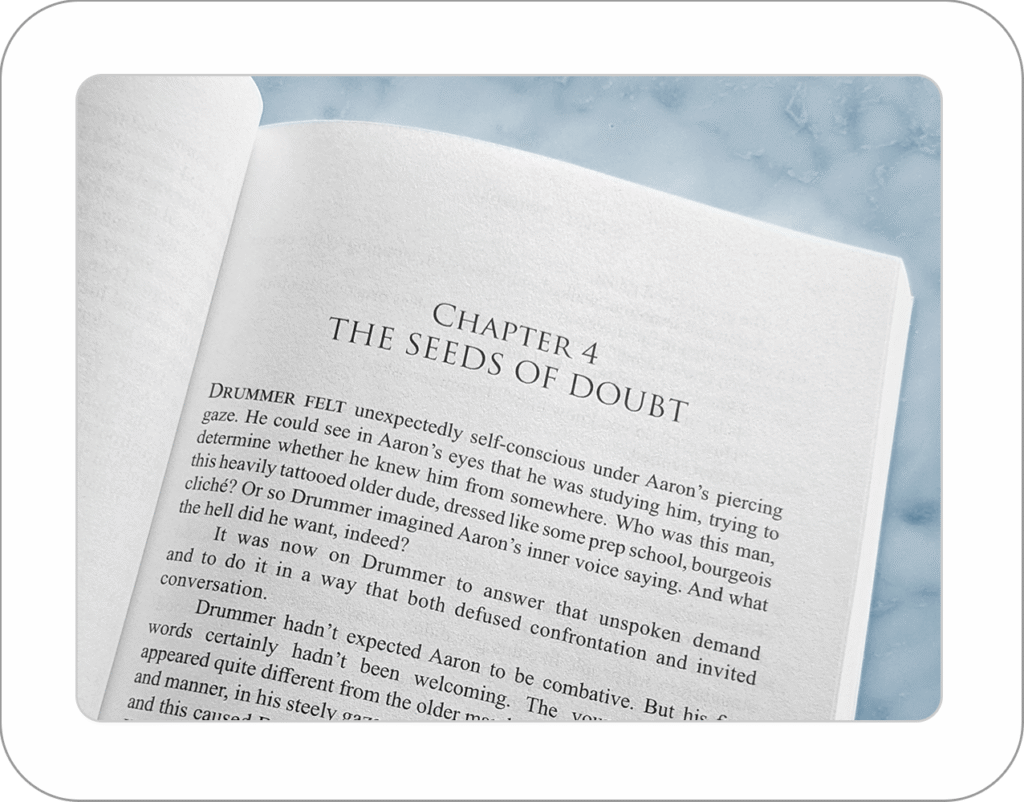Why You Should Read “A Bridge in Glass”

April 5, 2025
Why You Should Read A Bridge in Glass
I’m proud and humbled to see my debut novel, A Bridge in Glass, published through Dreamspinner Press. Now that it’s available for preorder, I’d like to share more about the book’s characters, narrative and themes. (I don’t give any direct spoilers here, but if you want to know nothing at all about the book’s narrative, you might want to skip to the last paragraph.)
At its core, A Bridge in Glass is a love story and a time travel piece. I’ve always been a die-hard romantic and a fan of time travel stories and I’m excited to have written a novel that incorporates both. Some of my favorite stories use time travel to tell a mysterious or tragic tale, like the movie “Somewhere in Time” and the novel it’s based on, Bid Time Return; or “12 Monkeys,” a Terry Gilliam film based on 1962’s “La Jetée.” I’m still drawn to stories that take a lighter approach like “Back to the Future,” but I’m a complete sucker for a book, movie or television show that can make me feel the emotional consequences.
A Bridge in Glass definitively falls into a heavier romantic category. The fate of the world doesn’t necessarily hang in the balance, but the entirety of the relationship between the two main characters—Drummer Foss and Aaron Hayes—absolutely rests on the choices they make and the actions they take. The conflict lies in the fact that Drummer, after being inadvertently sent back twenty years, makes changes to the younger Aaron’s life. And as a result, the relationship that forms between them produces unforeseen and dubious outcomes. Collectively, they give rise to a shared worry that what Drummer and Aaron are doing may not be the right thing for their future.
A Bridge in Glass also teases its own form of misdirection. A writer using misdirection may lead the reader to believe one thing is happening when the truth is something else. A Bridge in Glass doesn’t do this explicitly, but it does play with the reader’s expectations of how time travel stories are supposed to be told. Rather than purposefully misdirect, the story gives evidence for multiple possibilities, compelling the reader to question whether their assumptions are correct.
A Bridge in Glass also stands apart from other time travel stories by the duration of the narrative. It takes place over the course of a decade, with repercussions lasting twenty years. Most time travel stories take place over a much shorter period of time—a few days or even hours. For example, the movie “Time Crimes” happens in one day. “Back to the Future” takes less than a week. These examples rely on a technique known as a “ticking clock” to build suspense: the protagonist must do “A” in a short time before “B” happens, with “B” representing some kind of dire consequence. In A Bridge in Glass the ticking clock is a very slow one, giving the characters time to experience the joy and fear of what’s to come, and to debate the consequences of their actions without knowing right away if they’ve done the right thing.
It’s always been my hope to tell a different kind of time travel story. A Bridge in Glass is exactly that. It’s emotionally consequential and offers the reader a genuine dilemma that is unique and unexpected. I want to thank you sincerely for taking the time to explore A Bridge in Glass. I’m sure you’ll love reading it as much as I did writing it. The novel can be found at Dreamspinner Press, Amazon, Google Play Books, Kobo and more.
